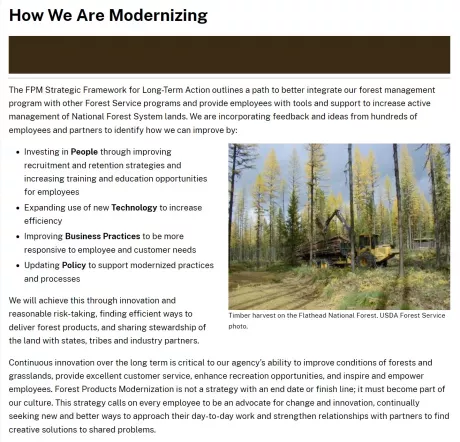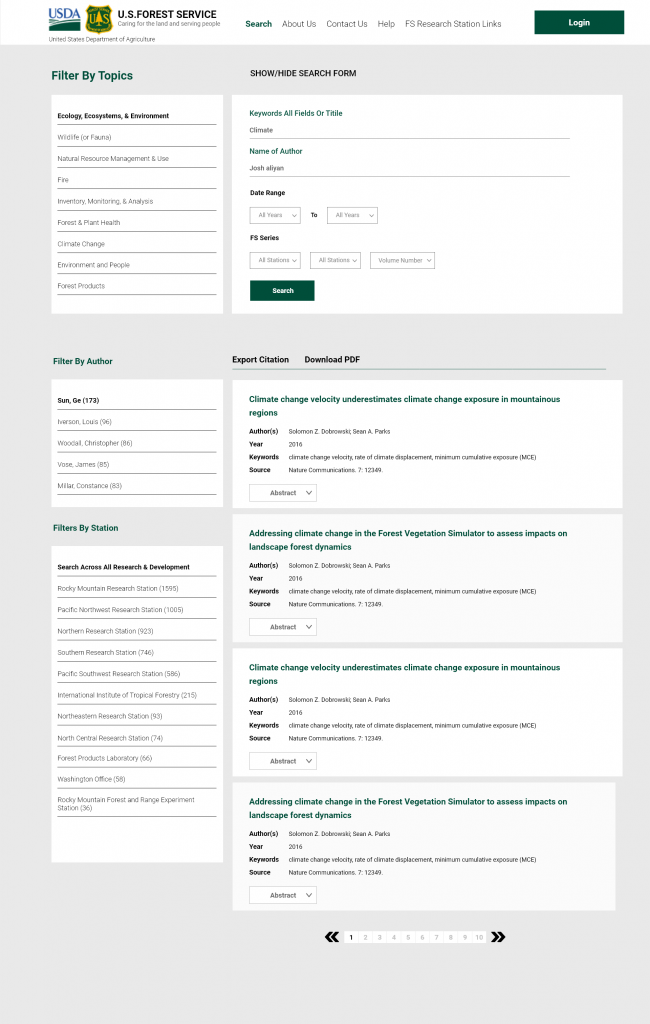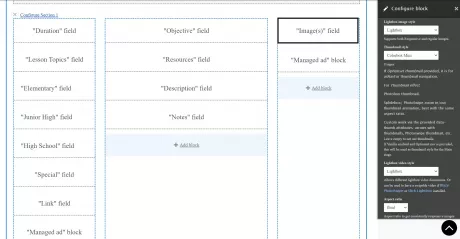#Drupal, #GraphicDesign, #Migration, #OrganizationAnalysis
Drupal
Forest Service Publications Treesearch
As part of the Web improvement and modernization initiative of the US Forest Service, HGC was tasked with updating the public search functionality for all research “Treesearch” publications, comprised of over 56,000 studies and papers.
The public-facing service needed to be migrated from its original oracle-based backend system to a modern Drupal one. And a regular update process needed to be in place to regularly import new publications, until a planned future phase allows scientists and researches to submit via an update Drupal content editing interface.


Creating a custom migration and update process
Our first step in moving the Forest Service’s catalog of more than 56,000+ publications was to create a custom migration from their “RITS” system, which uses an Oracle database and deep integrations to external resources, into Drupal.
This was an interesting case due to the client’s requirement that the content contributors (researchers) would continue to use RITS to submit new publications, which would then need to be regularly updated to the new Drupal front-end system. And it would need to be configured to ONLY pull in new or updated records, as we couldn’t have the system continuously rewriting all 56k+ records every day.
Standard data source mapping definitions were created for to move data, as well as parsing and concatenating processes as required for new output handling requests of certain information.
#Drupal, #GraphicDesign, #Migration, #OrganizationAnalysis
Drupal
Intuitive, accessible publication search features
The goal of Treesearch is make the extensive body of research conducted by Forest Service scientists and supporters available – to other researchers within the agency, external scientific entities, and the interested public at large.
With this primary goal in mind we set out to build a search page that was easy to understand and use for everyone, from seasoned invasive-species-repeat-contributors to the casual or first-time visitor.
Using a combination of Search API facets, string search inputs, and field filters, users can navigate directly to a publication they have in mind, or browse by an almost unlimited number of considered criteria. We decided to power our search functionality with SOLR to handle the load, with such a large catalog of content that is only expected to keep growing.


Better structure with updated layouts
The Forest Service needed a functional, comprehensible design that internal staff would be able to easily access and update themselves when necessary, without requiring them to engage with us or another entity for minor content changes.
To achieve this we employed Drupal’s new Layout Builder feature. With a few minor patches for ongoing issues and select customizations for specific requests, such as providing Altmetric activity data, we created attractive, responsive pages to showcase publications, researcher profiles, and featured content.
#Drupal, #GraphicDesign, #Migration, #OrganizationAnalysis
Drupal
Performant & responsive design
And finally, with an upward trend of more than half of all web browsing and over 60% of all organic search engine visits occurring on mobile, you simply can’t have a modern website that isn’t prepared to provide a positive experience across any platform.
As we updated Treesearch’s features and functions, ensured its accessibility, and provided an intuitive tool for anyone interested in this incredible resource – we also tested, assessed, and retested that they could from any device, browser, and orientation they wanted to.
